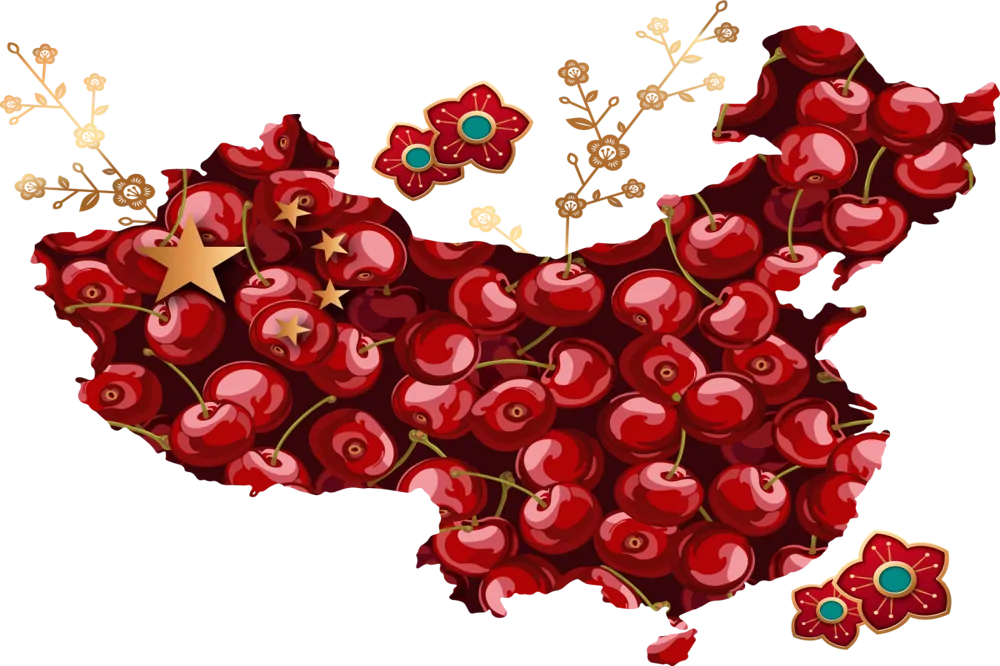The origins of Krymsk® rootstocks date back to the middle of the last century, when Gennady Eremin started a selection programme on stone fruit rootstocks (cherry, peach and plum) in the experimental station of the same name located in southern Russia, between the shores of the Black Sea and the foothills of the Caucasian chain.
The objectives of this project were to obtain dwarfing or semi-dwarfing rootstocks capable of adapting to that environment: soils that tend to be clayey and a hot, dry summer climate. As a starting point for his work, Eremin collected thousands of wild landraces, thus creating one of the world's largest gene libraries of the Prunus genus.
The selection carried out on this germplasm bank allowed researchers at the Krymsk station to identify genotypes deemed suitable for intraspecific crosses and, after several years, to arrive at the desired goals. The merit of Eremin and his research team was that they conducted the experiment under extreme soil and climatic conditions, with little or no irrigation and minimal fertiliser use.
As a result of this work, the new Krymsk® rootstocks are more resistant than others of similar vigour available on the international nursery market.
For the cherry tree, both sweet and sour, three rootstocks have been licensed, patented and commercially distributed: Krymsk® 5, Krymsk® 6 and Krymsk® 7. The company Variety International based in Oregon (USA) manages the worldwide propagation of Krymsk® rootstocks through exclusive licences to nursery companies in the main cherry and sour cherry producing countries.

KRYMSK® 5 - VSL-2*
Origin: Prunus fruticosa x Prunus lannesiana
Compatible rootstock for sweet and sour cherry varieties. Induces a similar or slightly higher vigour than Gisela® 6 and shows high and early productivity. Compared to Gisela® 6 it has a better anchorage and greater adaptability to heavy, moist soils. It shows moderate suckering activity on these soils. Krimsk® 5 withstands cold climates well in winter and tolerates high temperatures and conditions with limited water availability during the spring-summer season.
KRYMSK® 6 - LC-52*
Origin: Prunus cerasus x (Prunus cerasus x Prunus maackii)
Rootstock compatible with both sweet and sour cherries. Induces a vigour similar to Gisela® 5, about 10-20% lower than Krymsk® 5. Has a very early fruit set and comparable productivity to Gisela® 5. Compared to the latter, it has shown greater adaptability to heavy, moist soils. It withstands cold winter and hot summer climates well. Has moderate resistance to lime
KRYMSK®7 - L2*
Origin: Prunus lannesiana
Rootstock compatible with sweet cherry varieties. Induces lower vigour than the franc (Prunus avium), similar to that of the magaleppo (Prunus mahaleb). The earliness of fruiting and productivity are superior to franc and Colt and comparable to those obtained with Prunus mahaleb. This rootstock also tolerates winter cold, hot summers, heavy soils and water stress well.
The breeding project of the Krymsk Research Station continues. Promising new rootstock selections for the cherry tree (see table below) are being tested in several countries, including Italy. Thanks to an inter-regional project supported by Battistini Vivai and co-ordinated by Stefano Lugli of SL Fruit Service, the evaluation of these new genotypes is being carried out in Trentino (Coop Sant'Orsola), Emilia-Romagna (University of Modena and Reggio Emilia and Apofruit), Marche (Polytechnic University of Ancona) and in Apulia (Agrimeca Fruit Consulting) with experimental trials on different varieties, planting distances and training forms.
| Rootstock | Code | Vigour* |
|---|
P. serrulata | 42-2-16 | 70 |
P. serrulata | 42-2-16 № 1 | 70 |
(P. maackii x P. cerasus ) x P. lannesiana nr. 2 | RVL-4 | 70 |
(P. cerasus x P. pseudocerasus) x (P. fructicosa x P. lannesiana) | С 56-12 х VSL-2 | 60 |
(P. avium x P. incisa) x (P.fructicosa x P. lannesiana) | A-9 x VSL-2 | 60 |
(P. maackii x P. cerasus ) x P. lannesiana nr. 2 | RVL-7 | 60 |
P. canescens x P. cerasus | 18-7-17 | 50 |
P. serrulata x P. sachalinensis | | 50 |
P. mahaleb х P. fruticosa | | 50 |
(P. cerasus x P. maackii) x (P. fructicosa x P. lannesiana) | Rulan 8 | 50 |
* 100 = Mazzard (Prunus avium). Sorce: Mass, 2019 | | |
Cherry Times - All rights reserved













